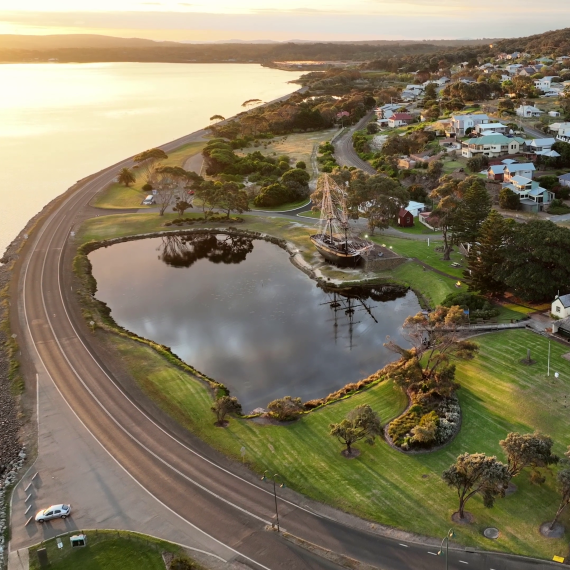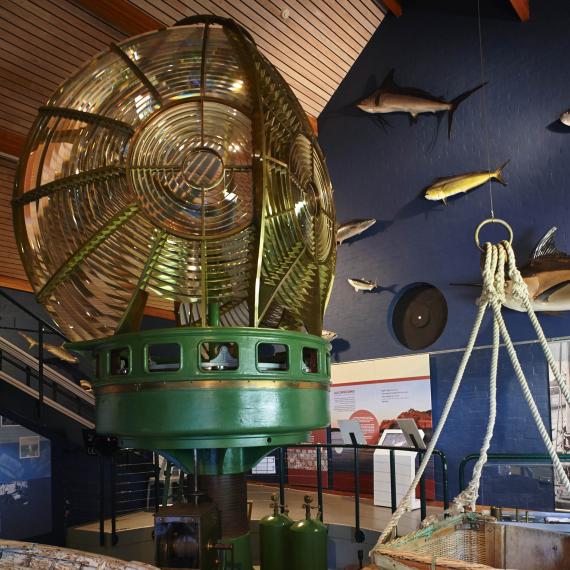
Entangled Knowledges
Today’s episode follows the global connections to Albany’s stories and shares how these stories are coming home today. Entangled Knowledges is a locally-driven international research project that is rediscovering and reinterpreting museum collections by bringing living cultures into the mix. It's combining colonially curated material from UK museum collections with knowledge and insights from Menang Noongar cultural custodians and community members.
-
Episode transcript
Jessica Machin (JM): You are listening to a podcast from the Western Australian Museum. We acknowledge and respect the Traditional Custodians of their ancestral lands, waters, and skies.
Hello, I'm Jessica Machin, working with the West Australian Museum on Stories of the Great Southern, a podcast series, where we explore the histories of the Great Southern region of Western Australia with a diverse collection of local and expert voices to develop a greater understanding of what it means to be Western Australian today and beyond.
In past episodes, we delved into collections and stories of the Albany region. You can listen to those where you found this one. Today’s episode follows the global connections to Albany’s stories and shares how these stories are coming home today. Entangled Knowledges is a locally driven international research project that is rediscovering and reinterpreting museum collections by bringing living cultures into the mix. It's combining curated material from UK museum collections with knowledge and insights from Menang Noongar cultural custodians and community members.
Unknown voice: I think it's really important that we keep entanglement.
Corioli Souter (CS): The whole story of Australia through archaeology is about interaction. You add so much more to your understandings to balance it.
Unknown voice: In that house were Menang people, and their words were swirling around the walls of his cottage.
JM: Today our producer, Tom, and Toni Church from the Western Australian Museum are visiting a site located north-east of Albany’s town centre, the Menang Noongar fish traps at Oyster Harbour.
This place has been an important cultural site for thousands of years. The Entangled Knowledges project, led by Associate Professor Tiffany Shellam of Deakin University and Menang community members, is grounded at this site. Visitors are invited to explore along a sign-posted boardwalk beside the stone fish traps that line the estuary’s shores. Here we find information and images from colonial British amateur scientist Robert Neill alongside the fish traps that remain an enduring symbol of cultural practice and shared knowledge between different peoples and across generations.
Tom Allum: What are we looking at? What can you see?
Toni Church (TC): Driving our here, it's quite an unexpected sight. You enter through what is a very modern housing estate and into what looks like a very nice park and walking space. We're looking across a very wide expanse of bay just on the other side of Emu Point and Bayonet Head, and you can see sort of little rocks in between. There's a cormorant hanging out on some of these rocks, drying its wings on this rainy day.
It's a very significant area to Menang Noongar people, and we can see just a slight remnant of the fish traps that would have been here for thousands of years, but that we know are underneath the high tide.
We've organized to meet with Vern Gillies, who's a Menang Noongar Elder who's generously gifted her time to speak to us about the Oyster Harbour fish traps today.
Verne Gillies (VG): Well, they're rather iconic. There are eight of those beautiful fish traps, which means, obviously, that there were a lot of people. They were there to cater for a lot of people at one time. And so, we know that it was probably a place of a corroboree, of dance, of celebration, of music, of doing the business of tribes, many tribes. They are between six and a half and 10,000 years old, so they're quite, they're quite old, but not as old as some of the other sites that we have around here, of course.
When the tide’s high, the water will actually wash over the fish traps, making them [...] this is a men’s job. And they would go out and walk around the, the stone arrangements and put pieces of wood in between with brush around it as well, and make sure that that semi-circle was quite intact.
And when it began to ebb, the large fish would get trapped behind and the smaller ones, of course fingerlings would be able to escape. Because the fish traps were built from small stones at the base to larger ones and larger ones, and then the largest ones on top. And that created little holes all the way through so that those little fingerlings could escape, live out in the bay, and grow and be there until it was their turn.
They never wanted to not have fish, so the babies, let them go, always, always let the little ones grow because they will grow into mature fish that you can take at some stage. So always, much aware of not taking all of everything.
JM: Toni reads from some of the interpretive signage that has been installed at the Oyster Harbour Fish Trap site. This information was generously shared by the Menang community and other researchers.
TC: Fish traps are likely to have existed at this location for thousands of years, possibly since Oyster Harbour was formed, as a result of rising sea levels over 6000 years ago. We know Menang people have lived in the area for at least 20,000 years.
There's a beautiful boardwalk that's been placed over this site to limit the damage that's done when people come and visit, and then to have this great interpretation through something as simple as this interpretive signage is really quite special, to give you a sense of significance.
And there's some interpretation that tells you a little bit about Robert Neill. He was a commissariat in Albany and around the 1830s and he struck up relationships with Aboriginal people who brought him specimens of fish, which he’s then painted there on this site as fish that would have been picked up in the fish traps by Aboriginal people for thousands and thousands of years who are using this site as part of their traditional hunting grounds.
So, from a museum perspective we have European records, plentiful European records, of these sites from Collet Barker, who was here in the 1830s, through to Robert Neill, who collected the fish specimens and then painted them. So, we have written and material evidence of this site. But to have the site itself entangled with the Menang knowledge is existing today and continuing to educate young people and visitors, it's really quite special.
JM: Menang Elder Vern Gillies explains how this unique relationship between a colonial public servant turned amateur scientist Robert Neil, and local men and community members thrived in the early period of Albany settlement by the British.
VG: I think it, it happened as a result of him hearing lots of noise on one particular night that drifted back in to where Albany, Kinjarling is now situated. And he could hear this noise of lots of celebrations going on. And so, he was determined to find out what was going on and went out there. There were people catching fish, and he was fascinated with the varieties of fish that they were actually catching, taking out of the, the actual traps themselves.
For posterity he decided that he was going to use his talents and draw them. And they're exceptional in that you can see every scale. He's got also, the English, if you like, name of each of the fish, but he's also got the Noongar name, the Menang name. So, he's been fascinated by it and listened and spoke to them. And they're just incredible, they're mind boggling. The particulars, the fins, you can look at them and go, I know what that fish is, you know.
TC: Neill continued a tradition of European settler interaction with them and, people documenting their language and cultural knowledge and relying on them to survive in the country around Albany. As a result, Albany has amongst the most detailed records in Australia of traditional life at the time of European colonization.
There are stories of Aboriginal people fascinated by the images he produced and crowding around to touch them, as well as providing him with information on the fish. Neill returned his drawings to England, where the originals are held by the Natural History Museum in London.
Tiffany Shellam (TS): [Online video conferencing noise] I am Tiffany Shellam, I'm a historian at Deakin University. I basically collaborate with Noongar people and with curators and archivists to unpack and unearth the kind of more hidden histories in archives and museum collections to, to workshop them with Noongar people and explore different stories from those collections.
JM: Associate Professor Tiffany Shellam is the chief investigator on the Australian Research Council funded project titled Entangled Knowledges. With a diverse team of historians, anthropologists, archaeologists, scientists, and museum curators from across Australia and the United Kingdom, the project aims to reverse the trajectories of Menang Noongar knowledge embedded in Robert Neill's historical fish collection, returning language stories and fishing practices to the Menang community.
TS: So, the project is titled Entangled Knowledges Kaartdijin, Science and History in the Robert Neill Collection. Today the collection sits in a science museum in a Western science framework which a lot of so-called natural history collections do. But what's really clear to me is that it's a cultural collection, that this is a bio-cultural collection, and it has a lot of cultural knowledge and cultural associations with it.
So, we want to unpack that Western science framework to always centre Menang knowledge in our unpacking. You know, it gives the Museum the opportunity to reframe that collection with that cultural perspective as well, that Menang knowledge at it's, at its core.
As soon as I found this collection and realised the depth of Menang knowledge that was there. I contacted Shona Coyne, who is a Menang woman and a senior Indigenous curator at the National Museum of Australia.
And I said, Shona, this this is what I found. What do you think? It's pretty exciting. She said, You've got to call dad, you’d got to call Lester Coyne. So, I took what I had photographed and went to Lester’s house in Albany, and we sat down and kind of went through the collection together. He said, wow, this is really, really special.
I think Lester could identify a lot of the fish from his own fishing experience today in Albany. He's a keen fisherman still and has a lot of fish knowledge of this area. So, he was so excited to see the kinds of fish that were being caught at that time in the 1840s by his ancestors and the sorts of knowledge that they told Robert Neill about the fish.
So, the fish knowledge that was shared was a mix of fish habits and habitats, what fish lived where and when, when you could catch them, but also cultural and spiritual associations that the fisher people had with those fish. The way fish was shared when it was caught, what fish to avoid, and the kind of taxonomy that Menang people had about their fish and how it related to material culture. And there was lots of really interesting examples that Lester could point to straight away.
He pointed out things that I would never have seen, and that's often the case as a historian. I'm a non-Indigenous historian. I've got such a particular training, whereas Lester's got his own family experience and stories about being a Menang person on country and also being a fish person, like he could really, he could see both fish in the specimens, which looked to me like old, dried fish. I can't identify anything, you know, distinctive between many of them, except some are big and some are small. His knowledge kind of translate across both the sketches, which are beautiful, fresh images, and then these older dried skins. He can relate to both of those, and he could immediately tell me stories about particular fish.
There’s a fish in a collection, an actual dried specimen, and the painting of this fish called the Tabaduck fish. And the Tabaduck has a spiky head, a big point on its head, like the Taap, the knife in Menang culture. And so, you can see straight away that this fish has been named in relation to the taap, perhaps to warn that it's got a really sharp point on its head, like a knife.
There was one fish which has a growth on its anus, which has these kinds of animals living there like a parasite. And he could tell me what colour the fish was, if it had this parasite, and if it didn't have the parasite, it would be this other colour, that meant that it was safe for him to eat it. And there were different names for the parasite and the fish that he could relate to as well.
I think actually it was something that affirmed a lot of his knowledge that he has, which was really exciting to have that kind of affirmation of this deeper ancestral knowledge, and he was just blown away because I think he could see a significance of the contemporary knowledge, but really the knowledge that could be brought back to the community to workshop with them.
Ali Clark (AC): I'm always curious about other areas of the world, but also learning about kind of the history of Britain's engagement with the rest of the world as well. And a lot of these collections are about that.
JM: This is Dr Ali Clark, Senior Curator for Oceania, and the Americas at the National Museum of Scotland where some of Robert Neil’s collection is held. She spoke to us about how indigenous collections have been kept and curated in British museums, and how this is changing for the Robert Neill collection by involving Menang community members through the Entangled Knowledges research project.
AC: So as a curator, I mean your job is quite varied. I see myself very much as kind of a custodian of the collections. It's very much for me about making the collections more accessible for Indigenous communities whose cultural heritage it is and other interested parties as well. It's a long, complicated history of the way in which museum collections in larger museums get kind of categorised and disciplines emerge, and things get moved into different departments and almost stripped apart. So, the Neil collection is fishes, it's mammals, it's reptiles, it's crustaceans, but it's also kind of cultural objects as well.
For the most part, it all came in at the same time, but then as the disciplinary divisions and museums were happening, things get put in particular departments and then they get more and more dispersed in so that the collections no longer speak to each other. They're even stored in different places. The more things get reregistered and moved and shuttled amongst departments, the more information you lose. So we can never definitively say one object is definitely a Neill-collected object, but through having worked with Shona, who came over as part of the Collecting the West Project, she was able to identify material that, because of the time period that we know it came in, it's very likely that that is one of the objects that was collected by Neill.
It's just having those conversations at this point. I've been photographing a lot of the objects and have brought those photographs with me so we can work through, yes, this is probably one of the Neill objects, no, it's not but it might be from the Southwest, it might be a later collection. And so, whilst I think identifying these Neill-collected objects is important is also just about saying what is there from Menang, communities that might be in museums and knowing what the Menang people that we're talking to are going to want out of the collections, what's useful for them.
TC: So, we'll be doing workshops on country around the fish traps and around fishing sites, but also Menang people's contemporary fishing experiences.
JM: Tiffany describes how the research team will be engaging with local Menang community members in on-country workshops held in Albany.
TC: Shino Konishi, a historian working on Indigenous biographies, she will be recording contemporary fisher people's stories and their relationships to fishing today because Menang are a great fisher people and love fishing and that's a really important experience for them and we want to record those moments as well.
Also, from walking through country in particular sites where the fish were caught. Robert Neill collects that kind of detailed information. So, we'll be doing some mapping around where fish were caught in the 1840s and where they might exist now.
Glen Moore (GM): I’m Glenn Moore, the Curator of Fishes at the West Australian Museum. I'm responsible for understanding the biodiversity and the distribution of fish in Western Australia. That includes a large part of a taxonomy and describing species, looking for new species, and understanding their relationships with each other.
JM: Dr Glenn Moore lends a scientific voice and expertise to examining the Robert Neill collection, as part of the Entangled Knowledges project.
GM: It's exciting for me because I've never really worked in a in a social science project before. I'm a biologist, and so it's very cut and dry for us. So, I'm feeling my way through as well. I think it's, it's exciting, it's really interesting. I hope that by bringing in a little bit of biology about the fish, we can look at them in a slightly different context and a different perspective and maybe understand how the Menang people used those fish 200 years ago and maybe understand what they're doing with them now if they are in fact still using them, perhaps they're not.
There's a few really interesting fish that I've picked out at the moment and hopefully this will develop as part of the project that, they actually have a Menang name. And it does confuse me about how they have a Menang name because these fish are generally deep-water fish. So, they wouldn't have been regularly seen by Menang people, they certainly would have been too deep for them to spear. So, they didn't have fishing lines, anything like that. So, how did they actually know what this fish was?
Taxonomies have been around since humans have been around. You have to have some sort of structure, something where you can lump groups of things together. Of course, Indigenous peoples globally have had to develop taxonomies, naming systems, to be able to communicate their word to each other.
But usually, those taxonomies are based on utilitarian aspects. So, how things can be used, whether you can eat something, whether you should avoid it, where you might catch it, or what season is the best season to catch. It might be incorporated in the name that these animals are given. I’ve found, in looking at various languages, particularly Aboriginal languages in Western Australia, it's that they might have different names for the same species depending on the age.
So, a small fish would have a different name to the adult. The name that the small fish has might actually be the same name that a juvenile of a different, completely different species has because from a used utilitarian purpose that name might mean, for example, bait. So, it doesn't matter what species in the context that I think of a species, it matters how they're going to use it. So, a small fish is a baitfish, and it gets the same name no matter what it is.
And so, the same with an adult fish. You might get a different name for the fish during the fat season, when the fish is nice and chubby and it's the best time to eat it. So, it has a different name versus when you don't really want to eat it or whether it's, you know, it's got bitter or whatever it happens to be. So, the taxonomy is still there, and it's been around forever, but it's from a different perspective, a different purpose.
I was surprised when I was looking at the fish to see the name ‘paril’ against what I know, as a Brownspotted wrasse. The Brownspotted wrasse is called Notolabrus parilus. I like Latin, understanding the roots of the names that I work with, but I didn't recognize paril, I couldn't figure out where parilus had come from, until I saw Robert Neill's painting and he had written in the corner that the Menang word for this fish was paril. This name was applied to this fish in 1850, maybe by Richardson.
The paintings that Neill had sent back to the British Museum and the ichthyologist, at the time, Richardson, had chosen to use the Menang name, 200 years ago or so, which I think is pretty amazing because it's not a lot of examples of that back in, back in the day. So, I think there was a good relationship with the Menang people at the time to be able to do that.
It's an interesting collection, and this is one of the problems I guess, of museum collections is that they are often ad hoc, so we don't necessarily have a complete inventory from any place at any point in time. So, museum collections work by a long collection history, and then you build up these big pictures about distributions of fish and what lives where. And certainly, that's how you can then measure change through time with climate change and so forth and human changes.
But Robert Neill has a pretty comprehensive collection. It's definitely not complete. You don't know what he missed. You only know what he's collected. But if you think about the time, what he pulled together and illustrated, most of those species that he has illustrated, I would expect to see in or around Oyster Harbour today. So, there's this point in time that we know that things were there, and he has a little comment in that these are common, or these weren't very often found or this is only caught by a [?] net when the sailors were out there doing their, their sampling or so forth. So, his notes are so good to, to really set up a baseline, if you like, about what species were there and what level of abundance that we might have seen in them as well.
And finally, I'm interested in working with a group of people that I've never worked with before and challenging my [...], the way I think about the world. You know, I'm very black and white, cut, and dry as a, as a scientist. So, to work with historians and anthropologists and the Menang community, of course, it'll just make me look at the world from a slightly different way and look at this collection from a different perspective. And I think that's a really [...] that's a great opportunity.
TS: And I kind of like to think about in Robert Neill's cottage, which was above the Commissariat stores where he worked, in this cottage he kept live animals that live marsupials that he captured. He was observing them, sketching them, drawing them from a very scientific perspective. But in that house, were Menang people as well, and their words were swirling around the walls of his cottage.
So, the kinds of things he recorded, he recorded this mix of knowledges, this so several Menang names for some of the fish, depending on the age of which the person who gave him the knowledge. He also records the common or settler name of the fish, and also distinguishes that between what the sealers called the fish as well.
So, he kind of captures this really interesting, intercultural Southern Ocean frontier and the kinds of diverse knowledges around that time from the surveying and that really interesting 1840s moment when there are lots of people visiting King George’s Sound and lots of interesting explorers and visitors coming through and who are obviously very curious about the local flora and fauna, but also Menang knowledge and wanting to record that.
I saw also on the watercolours, scales from some of the few specimens that he'd caught. So, I thought, this is really interesting material connection, did he also preserve fish as well, the fish that he that he sketched? And so, I kind of did some digging and ended up going to Edinburgh, to Scotland, to the National Museum of Scotland, where he was from, and he'd sent home the fish that he'd collected in 1840. So, I went up there to the collections and, and they were just [...] blew me away. They had no idea really what they had. And twice, instead of probing and asking questions and seeing the actual specimens was really exciting because straight away I saw that there were Menang spear holes on the fish specimens themselves. So, this was really exciting, tangible evidence of Menang activity and an action in the collection that they had [...] that was made in 1841.
VG: Now we know also about there being an oven made out of stone that set on a very high point, very close to the fish traps
JM: Meaning Elder Vern Gillies takes us back to the Oyster Harbour fish traps.
VG: When winter started, they would smoke the fish and when they went inland during the worst of winter, take their smoked fish with them. A lot of people would have been invited to come for a corroboree. Come together, eat lots of food, not just fish, but kangaroo and emu. Sat around, danced, sang, and did the business of the tribes, the arranged marriages, and the swapping of weapons and food. And then of course, that use oven to smoke the fish and salting it and smoking.
TC: It would be delicious as well.
VG: Yes. And very light to carry, very light to carry because people walked.
AC: I think the Neill collection is quite interesting the way the particularly the fish collections had been preserved using Indigenous means of preservation rather than kind of Western scientific ones. And that, that's what I always find interesting. That kind of point of entangled knowledge which perfectly kind of encapsulates the project, you've got that kind of Western, but also Menang knowledge systems going on.
If you look at museum catalogue systems at the moment, particularly in the UK, it privileges a certain level or type of knowledge. And so it's thinking about actually how we kind of put everything more in an even keel and is part of that whole kind of trying to step back and rethink how we as curators in British museums understand these collections because we've spent so long going to university and learning that you learn something from an anthropological perspective or a zoological perspective, and it's actually taking that step back and saying this is these are all aspects of life. Despite the fact that these collections are being divided, we need to understand them kind of holistically. And so that's one of the beautiful things about the project and understanding that there's lots of different forms of knowledge inherent in these collections.
TS: Yeah, I think this project and this research is really vital because it has the opportunity to reverse the trajectory of knowledge which the collection forged in the first place by taking Menang language and stories and knowledge about these animals off Country and storing them in this museum overseas. By reassembling this collection, with Menang people we can restore that knowledge back to a community at a time when it's so important to know about particular animals and their habits and habitats. You know, environmentally, it's crucial that this knowledge is restored for Menang, but for everyone, I think. And it gives museums an opportunity to face their colonial pasts. The natural history museums haven't had a chance to do that. And they really need to, to understand that colonial legacy, I think is really, really important.
TC: Those ideas of colonial legacy are coming up very quickly for us here in Western Australia. I suppose beginning in 2026, we’re marking the 200 years of arrival of the Brig Amity, which is covered in one of the other episodes of the podcast neatly and nicely. But we've sort of spoken to a few of our guests on the podcast about what is 2026 and what is those bicentenary moments, people are using different terms they’re using equally commemoration, celebration, marking. How do you see research such as this fitting into moments like 2026 and then the future of this sort of reconciliatory process of research that you're doing?
TS: Yeah, it's a really good question. I think it fits into it really well because you could see it one way as being, you know, a lovely amicable moment of relationships, but it's not as clear as that, ever. And I think that's what the bicentenary is. It is a moment of all those things, of commemoration, of sadness, of legacies that we hold today. And I think that's what this collection brings and what these stories will bring.
There are some really amazing stories, stories about Robert Neill sitting around fires as he talks about being in the bush with Menang people, learning how to eat keelong, freshwater tortoise, those sorts of stories which are really lovely and we could focus on them, which we will. But that's not all, there are obviously, you know, it all occurred within this framework of dispossession and Menang curiosity, Menang openness, Menang generosity and sharing of their knowledge. All of that was happening all at the same time. So, I think your words that you just raised about the bicentenary and how we frame it, how we what words we use to describe it, you're not going to find one that suits everyone. And I think that's what this project is about to it, it's like all those things. And why would we try and make it into a neat story? It has to have all these little prickly edges because that's what that's what history is. This project will hopefully just be a way to begin conversations about this particular encounter. I guess it's long encounter of collectors. I think there are lots of options for different kinds of stories to be told here.
I think it's really important that we keep entanglement, we disentangle it, but then we keep it entangled too, because I think that's key to unpacking the collection. And that's why it's so important that we, we have this diverse group of people working together who bring, who bring their own knowledges and their own perspectives to share and to bear on this collection and what we can know from it.
JM:
You've been listening to Stories of the Great Southern, a Western Australian Museum podcast.
To explore the stories further, check out our show notes.
This episode was produced by Barking Wolf with Editing and Sound Design by Tom Allum.
Thanks to interviewees Vern Gillies, Tiffany Shellam, Ali Clark, and Glenn Moore
Story and research by Mitchell Withers and Toni Church.
Narration by me, Jessica Machin and original Music by Steve Richter and Tom Allun.
Stories of the Great Southern was made possible by a Foundation for the WA Museum Minderoo Grant, funded from the Foundation’s Discovery Endowment Fund.
Stories of the Great Southern was produced by Barking Wolf with editing and sound design by Tom Allum.
Thanks to interviewees Vern Gillies, Tiffany Shellam, Ali Clark and Glenn Moore
Story and research by Mitchell Withers and Toni Church.
Narration by Jessica Machin.
Original music by Stephen Richter and Tom Allum.
Images courtesy of Tom Allum.
Behind the Scenes
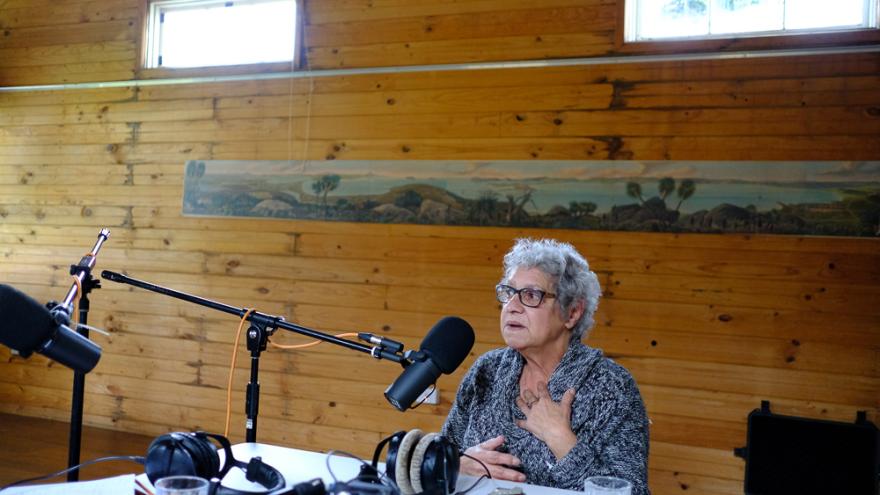
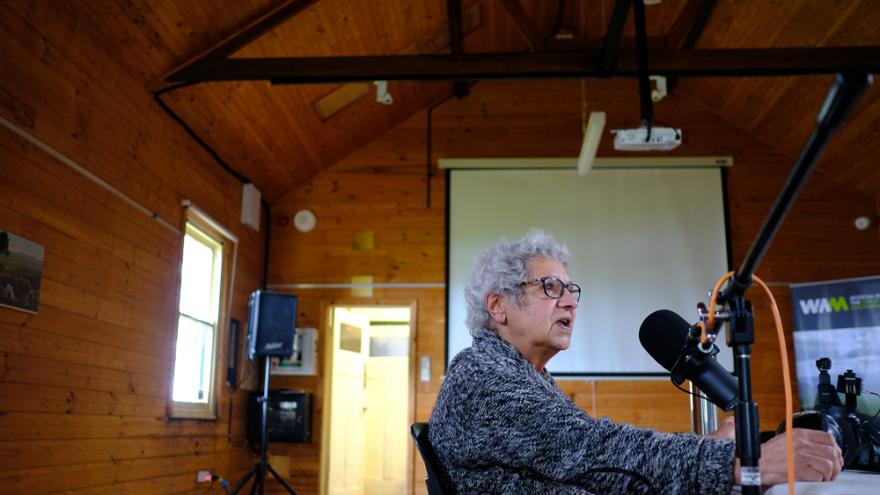
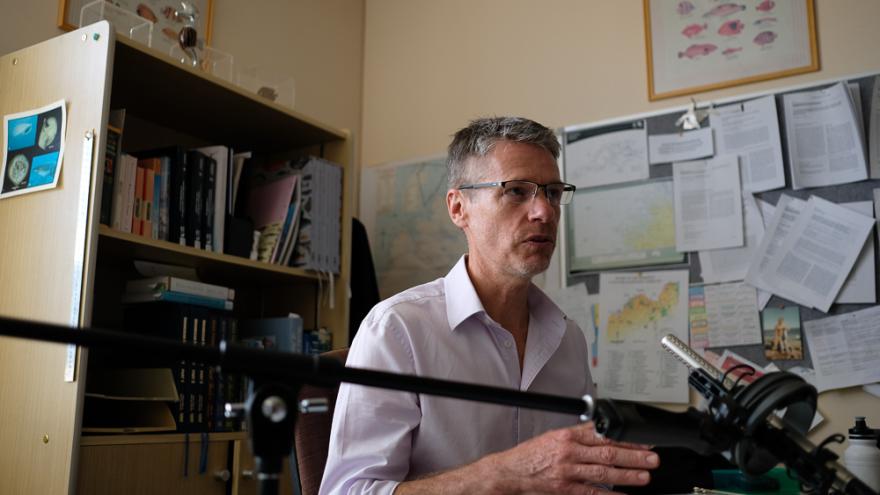
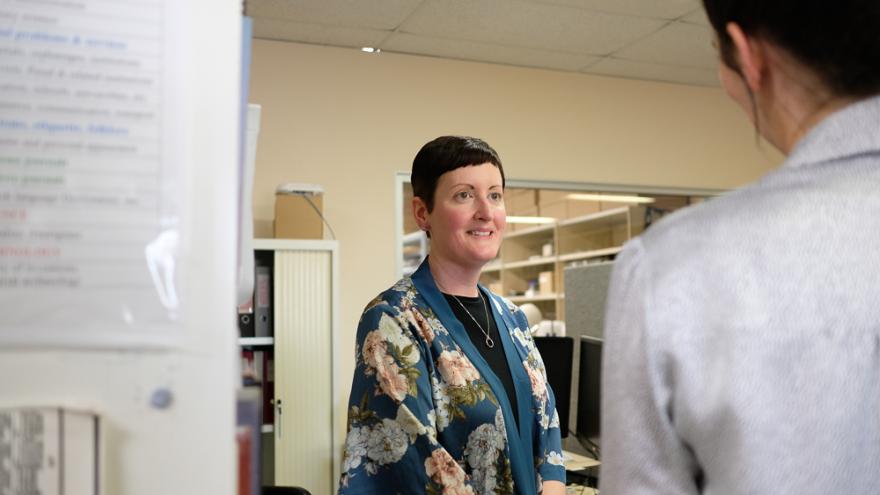
More Episodes
Today we are in the deep south of WA in a regional centre which has been known by many names across history; Kinjarling, Frederick's Town, Albany, we're here to understand what is in a name?
This episode takes place on the shores of Eclipse Island, a small, uninhabited parcel of land 17 kilometres south of Albany.
